- Welcome to Jewelspride Bengals
- SHOP
- Jewelspride Designs
- Life is Better With Bengals - Blog Articles
-
KITTENS
- Links
- SHOP
- Bengal Care - Everything You Need to Know
- About Us
- Catios and Cat Posts!
- Cat Boarding!
- ** Queens **
- ** Studs **
- Our Cattery and Visits
- Cat Wheels
- **NEW** Jewelspride Alumni
- Photo Gallery & Videos
- Uno's World
- Contact Us
- *New! Cat TV!*
- New Page
- Custom Gifts by Carmen
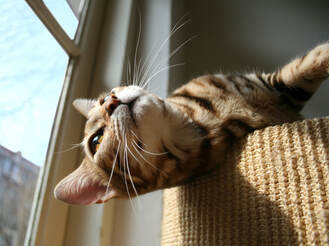 I wanted to write an informative or enlightening blog post this morning, but when I sat down to do it, my mind wandered to the movement and sounds of the cats around me in the solitude of the quiet morning hours, and it inspired me to simply write about how that feels instead 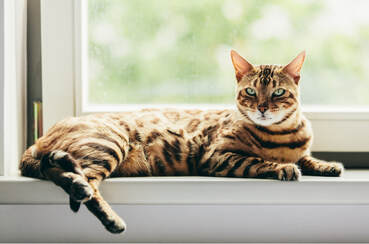 As the sun rises and the world wakes up, my home slowly becomes a playground of boundless energy, courtesy of my Bengal cat crew. Being a Bengal cat breeder, my mornings are an amazing blend of their playful shenanigans and the comforting aroma of a fresh cup of coffee. Watching their antics with my coffee mug in hand, I witness their quiet start-of-day conversations with one another, playful headbutts with me and the other Bengals, yawns, stretches and one casually batting a spring across the floor which triggers the start of some acrobatic leaps and playful scrummages with one another. Bengals truly possess an innate wild streak, channeling the spirit of their jungle-dwelling ancestors. Their agile moves and breathtaking beauty are a testament to nature's artistry. The warm rays coming through the window highlight a symphony of colors on their sleek coats as if they are living works of art. I get up very early in the morning - long before anyone else in the house - specifically because I crave this morning ritual. There's nothing like a quiet cup of coffee while I enjoy the cats and watch them embark on their adventures for the day. So, as the sun bathes your home in its warm embrace - no matter the time of day - take a moment to embrace the magnificence of Bengals. Celebrate the joy of being a caretaker for these captivating creatures, revel in their untamed spirit, and let their awe-inspiring beauty uplift your soul. Indulge in the magic of these extraordinary companions to infuse your mornings - and day - with pure joy.
0 Comments
If you own a cat or are thinking about getting one, you've probably wondered whether you need a cat tree. I've had kitten clients ask me if it's really necessary - they sometimes think it will clutter up their space or not go with their decor... there are so many reasons people question the need for one. Let's go through the reasons for considering a cat tree, and the benefits it provides for your indoor cat. Cats have natural instincts to climb, jump, and watch from high places. In the wild, cats spend hours sitting on tree branches, looking around to see if there are any dangers. A cat tree gives your cat a place to go up and down indoors, letting them use their natural abilities. It gives them a place to climb, scratch, and play, which is good for both their minds and bodies. If you are okay with your cat sharing your furniture and perching in high places such as the top of the refrigerator or your kitchen cabinets, then you may not need to add a cat tree to your home. But if you have issues with cats on countertops, shelves, or refrigerators, then you need to be prepared to make a specific cat-enriched space in your home for your cat so that they can fulfill their natural instincts. The benefits of this fulfillment are many: Exercise and Physical Health: Cats, especially house cats, need regular exercise to keep a healthy weight and avoid health problems that can come from being overweight. Your cat will get a great workout by jumping, climbing, and stretching on a cat tree's different floors, platforms, and perches. By doing these things, cats can improve their muscle tone, range of motion, and general health, as they would outdoors in their natural environment. Mental stimulation: Cats are smart and interesting animals that need mental stimulation to avoid getting bored and acting out because of it. A good cat tree has many places to explore, such as scratching posts, hanging toys, and hiding places. These things get cats to play with each other and meet their natural desire to hunt. A cat tree helps keep cats from doing bad things like scratching furniture or acting in other negative ways simply because they are bored. Territory and Ownership: Cats are territorial animals, and having a certain place to call their own is important to their sense of security and well-being. Cats can claim a high space as their own with a cat tree. It gives them a better view of their surroundings from up high, which helps them feel less anxious and stressed. Having their own place can also be helpful in homes with more than one cat because it gives each cat a chance to make their own territory and reduces fights. Environmental enrichment: A cat tree is more than just a piece of furniture; it's also a great way to make the surroundings better for cats. It adds variety and complexity to your cat's indoor surroundings by giving it different levels and surfaces. Cats can jump, climb, scratch, and look around, which is similar to what they would do outside. This natural enrichment is important to keep them from getting bored and to improve their mental and emotional health as a whole. 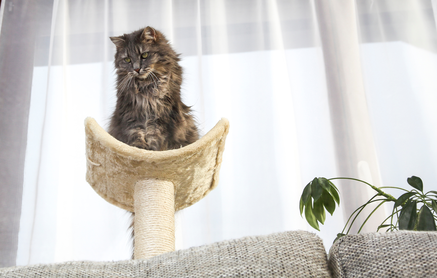 Buying or building a good cat tree for your indoor cat is a good idea that goes beyond just adding furniture to your house. It has many benefits, such as exercise, mental stimulation, establishing their territory, and making the surroundings better. By adding a cat tree to your cat's surroundings, you give them a place to do things that are natural to them and good for their overall health. It's a gift they'll love and use for a long time. 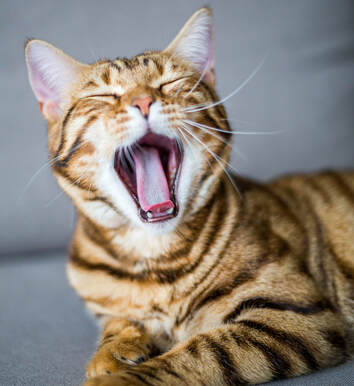 Ever feel like your cat seems to always be taking a nap? Cats can doze off for an impressive 12 to 16 hours a day (sometimes even more). It turns out they have their own unique sleep cycles, just like us humans. When it comes to their sleep patterns, cats go through two main stages: deep relaxation and dream-filled adventures. During the relaxation phase, their body temperature drops, breathing slows down, and their muscles unwind. It's their time to recharge physically. Cats then enter the dream stage of rapid eye movement (REM) sleep. Their brains become more active, their whiskers twitch, their eyes move rapidly beneath closed lids, and you may even catch them "chirping" or "meowing" softly. It's during this phase that they embark on exciting feline adventures, processing emotions and solidifying memories. You've likely witnessed your cat doing this during a nap, and thought to yourself that they must be chasing after a mouse, or dreaming about their favourite toy... and you're probably right! Now, let's look at the factors that influence your cat's sleep. A quiet and cozy environment is key to ensuring they catch some quality Zzzs. Cats prefer a peaceful spot with soft lighting where they can retreat from the world. Plus, keep in mind that cats are naturally most active during dawn and dusk. So, it's no surprise if they catch shorter catnaps during those times, and seem to take longer, more luxurious naps during the middle of the day. They're simply aligning their sleep schedule with their natural instincts. Why is quality sleep important for your cat? Well, just like us, cats need it to maintain their well-being. Adequate rest helps regulate their metabolism, boosts their immune system, and aids in muscle repair. A lack of sleep can lead to behavioral issues like hyperactivity, irritability, and cognitive decline. So, to ensure your cat gets all the health benefits of sleep, create a serene and comfortable sleeping environment where they can peacefully drift off. A mid-day nap on a high perch, with the sunlight streaming in through a nearby window may be a favourite napping spot. Spots like these feel comfortable and safe for a cat looking to retreat from the world for a moment to recharge. It's so important to understand and support your cat's sleep routine. The next time you catch your feline companion in a deep slumber, you'll know they're recharging their batteries and embarking on extraordinary dream adventures. So, let them enjoy their snooze-fest, and try to respect their nap time by not unnecessarily disturbing them during their slumber, as tempting as it may be. You can enjoy their boundless energy and contentment once they awaken! As a cat owner, you know the struggle of trying to eat a meal while your furry friend begs for food. Giving in to their persistent requests can lead to overfeeding and health problems such as obesity and diabetes. So, how can you stop your cat from begging for food? Here are some tips: 1. Keep your counters clear. Cats love to explore and are natural climbers, but they can also be curious about what's on your kitchen counters. To discourage your cat from begging for food while you're cooking or eating, make sure to keep your counters clear of any food or scraps. 2. Provide plenty of fresh water. Sometimes, cats beg for food because they're actually thirsty. Make sure your cat always has access to fresh water, and consider getting a water fountain to encourage them to drink more. Many cats enjoy playing with the moving water in a cat water fountain, which can help provide them with mental and physical stimulation. This can be especially helpful for indoor cats, who may not have access to as much environmental enrichment as their outdoor counterparts. 3. Rule out any underlying health issues. If your cat's begging behavior is sudden or extreme, it's possible that they're experiencing a health issue. Take your cat to the vet to rule out any underlying medical conditions that may be causing them to beg for food. Also, make sure they're enjoying the food you're providing to them and that it's full of the nutrition that they require, as an inadequate diet could be the reason they're seeking out more or different sources of food from your plate.  4. Stick to a feeding schedule. To stick to a feeding schedule, it's important to determine the appropriate amount of food for your cat and divide it into several small meals throughout the day. The number of meals can depend on your cat's age, health, and activity level. For example, kittens and younger cats may need to eat more frequently, while older cats may prefer fewer, larger meals. Once you've determined the appropriate feeding schedule for your cat, try to stick to it as closely as possible. Cats thrive on routine, and knowing when to expect food can help reduce anxiety and prevent begging behavior. If you feed your cat dry food, you can also use timed feeding dishes or automatic feeders to ensure that your cat gets food on schedule, even if you're not home. 5. Avoid plate feeding. Not plate feeding your cat can help discourage begging behavior and promote healthier eating habits. Plate feeding involves giving your cat food from your own plate or allowing them to lick your plate after a meal, which can encourage them to beg for food during meal times. Additionally, plate feeding can lead to overfeeding and weight gain, as it can be difficult to accurately measure the amount of food your cat is consuming. It can also lead to digestive issues and an upset stomach. Instead of plate feeding, provide your cat with their own designated feeding area and use measured portions of food to ensure they are receiving the appropriate amount for their size and age. This can also help establish a regular feeding routine and discourage begging behavior. If you enjoy sharing meals with your cat, consider providing them with their own food that is safe for them to eat, such as cooked chicken or a small portion of plain yogurt. This can help prevent them from begging for food during meal times and promote a healthy relationship with food. 6. Make sure your cat isn't bored. Cats are natural predators and need regular mental and physical stimulation to stay healthy and happy. When cats are bored, they can become destructive, anxious, and may exhibit unwanted behaviors such as begging for food. To prevent boredom, set aside time each day to play with your cat using interactive toys such as wands, laser pointers, or balls. This will provide your cat with physical exercise and mental stimulation. 7. Use a puzzle feeder. A puzzle feeder is a great way to provide mental stimulation and prevent boredom in cats, which can help reduce begging behavior. A puzzle feeder is a type of food dispenser that requires the cat to work for their food, often through problem-solving or physical manipulation. Using a puzzle feeder can be a great way to slow down a cat's eating, which can prevent overeating and weight gain. Additionally, the mental stimulation provided by puzzle feeders can help reduce boredom and anxiety, which can be a cause of begging behavior in cats. It's important to note that puzzle feeders should be used in conjunction with a regular feeding schedule and appropriate portion sizes. Puzzle feeders should not be used as a substitute for regular meals or to encourage overeating. 8. Ignore begging behaviour. Ignoring your cat's begging behavior can be a difficult but important step in encouraging healthier habits in your cat. Giving in to their demands can reinforce the behavior and lead to obesity and other health problems. Instead of engaging with your cat's begging behavior, it's best to remain quiet and calm, avoiding eye contact and responding to their behavior as little as possible. Providing an alternative, such as a puzzle feeder or a new toy to play with, can help redirect their attention from food and prevent boredom. Establishing a regular feeding routine can also help prevent begging behavior by ensuring your cat knows when to expect their next meal. It's important to remember that ignoring your cat's begging behavior can take time and patience. However, by staying strong and consistent, and providing attention on your terms by offering pets and cuddles when your cat is calm and relaxed, you can help break the behavior and encourage healthier habits in your cat. 9. Put your cat in another room. Putting your cat in another room can be an effective strategy for reducing begging behavior, particularly during meal times. This approach can be useful if your cat is particularly persistent in begging for food or if they become aggressive or disruptive during meal times. To use this strategy effectively, it's important to choose a safe and comfortable location for your cat to stay while you eat. This could be a separate room, a crate, or a gated area, depending on your cat's preferences and your living space. Be sure to provide your cat with plenty of comfortable bedding, water, and toys to keep them occupied and comfortable. It's also important to make sure that your cat doesn't associate being put in a separate room with punishment or negative experiences. To do this, you can offer treats or toys as positive reinforcement when you put your cat in the separate area. It's worth noting that putting your cat in another room should be used as a last resort, and should not be the only strategy used to prevent begging behavior. It's important to establish a regular feeding schedule, provide appropriate portions of food, and ensure your cat has access to mental and physical stimulation throughout the day. Additionally, it's important to ensure your cat has access to fresh water at all times, even when in a separate room. Overall, the key to stopping your cat from begging for food is to establish a routine and provide alternative sources of stimulation. By keeping your counters clear, sticking to a feeding schedule, and using puzzle feeders, you can help reduce your cat's desire to beg for food. Additionally, providing fresh water, ensuring your cat isn't bored, and ignoring begging behavior can help reinforce good habits and discourage bad ones. By following these tips, you can help your cat develop healthier eating habits and avoid overfeeding, while also strengthening your bond with your cat.
Cat beds come in a variety of shapes, sizes, and materials, but the most important thing to consider when buying one is your cat's comfort. Cats are creatures of habit and tend to prefer cozy, enclosed spaces where they can feel safe and secure. When choosing a cat bed, it's important to consider your cat's sleeping habits, size, age, and any special needs they may have. Here are some general types of cat beds you may come across when shopping (click on the photos for more info and pricing, etc): Donut cat bed: Donut cat beds are a popular option for cat owners who want to provide their furry friends with a cozy and comfortable sleeping space. These beds are typically round or oval-shaped, with a raised edge that surrounds the sleeping area. This raised edge provides a sense of security and comfort for cats, who often like to curl up in a ball when they sleep. Calming and anti-anxiety cat beds are a popular variation of the donut cat bed. These beds are designed to provide a sense of security and comfort for cats who are prone to stress or anxiety. They often feature soft and plush materials, as well as additional padding or cushioning to further enhance the calming effect. Pictured below is a very popular choice: Calming/Anti-Anxiety Cat Bed. Igloo cat bed: Igloo cat beds are a popular choice among cat owners who want to provide their furry friends with a cozy and private sleeping space. These beds are typically designed as enclosed structures with a small opening or doorway, which creates a sense of security and privacy for the cat inside. Igloo cat beds are particularly well-suited for cats who like to hide away and sleep in cozy, enclosed spaces. This can be especially appealing for timid or anxious cats, who may feel more comfortable and secure in a small, enclosed space. The enclosed design of these beds also helps to keep out drafts, which can be particularly beneficial during the colder months. Pillow cat bed: Pillow cat beds are designed to provide a soft and comfortable place for cats to rest, while also providing extra support for cats with joint problems or arthritis. These beds are typically made from soft materials like plush fabric, microfiber, or fleece, and are filled with a variety of materials like memory foam, shredded foam, or polyester fiberfill. The softness of the materials used in pillow cat beds helps to cushion and support a cat's body, reducing pressure on their joints and making it easier for them to get comfortable. This can be especially helpful for older cats, as well as cats with conditions like arthritis or hip dysplasia, which can make it difficult for them to find a comfortable sleeping position. Window perch: Window perches are a unique type of cat bed that attach to a window or window sill, creating a comfortable and elevated platform for your cat to rest and relax. These beds are particularly appealing to cats who enjoy watching the world outside, as they provide a clear view of the surrounding area and allow your cat to bask in the warmth of the sun. In addition to providing a comfortable place for your cat to rest and bask in the sun, window perches can also help to reduce boredom and anxiety in cats. By giving your cat a clear view of the outside world, these perches can provide a source of entertainment and stimulation, which can be particularly beneficial for indoor cats who may not have access to the outdoors. The Pecute Cat Window Perch is pictured below: Heated cat bed: Heated cat beds are a popular option for cat owners who want to provide their furry friends with a warm and cozy place to sleep, especially during colder months. These beds typically have a built-in heating element that is designed to keep your cat warm and comfortable, even on the chilliest of nights. One of the primary benefits of a heated cat bed is that it can help to ease joint pain and stiffness in older cats, as well as providing warmth and comfort for cats who are recovering from an illness or injury. The gentle warmth provided by these beds can help to improve circulation and reduce inflammation, which can be especially effective for cats with arthritis or other joint problems. Another option is to buy a pet-safe heating pad to insert into your cat's current favourite bed such as the one pictured below: Hammock cat bed: Hammock cat beds are a unique and stylish option for cat owners who want to provide their feline friends with a comfortable place to sleep and relax. These beds typically feature a fabric or mesh sling that is suspended from a frame or wall, creating a cozy and elevated space for your cat to rest. One of the primary benefits of a hammock cat bed is that it allows your cat to be up high, which is a natural instinct for many felines. Cats love to climb and explore their surroundings, and a hammock bed provides a safe and comfortable place for them to do so. Additionally, being up high can help your cat feel more secure and confident, which can be extremely beneficial for shy or anxious cats. Hammock cat beds come in a variety of styles and designs, ranging from simple and functional to more elaborate and decorative. Some beds are designed to be suspended from a wall or window, while others come with a free-standing frame that can be placed anywhere in your home. They are often made from durable materials like canvas or mesh, and may feature soft cushions or covers for added comfort. When choosing a cat bed, consider the material it's made of. Some popular options include plush fabrics, faux fur, and memory foam. Plush fabrics are soft and comfortable, while faux fur provides extra warmth and mimics the feeling of a cat's natural fur. Memory foam provides extra support and is great for cats with joint problems or who are elderly. It's also important to consider the size of the cat bed. Cats like to stretch out when they sleep, so make sure the bed is large enough for your cat to comfortably move around in. However, if your cat prefers cozy spaces, a smaller bed may be a better choice. Finally, consider the ease of cleaning. Cat beds can quickly become dirty and filled with hair, so look for beds that are easy to wash and maintain. Some beds have removable covers that can be machine-washed, while others can be wiped down with a damp cloth. When choosing a cat bed, consider your cat's comfort, sleeping habits, size, age, and any special needs they may have. Look for a bed made of comfortable materials, in a size that allows for comfortable movement, and easy to clean. With the right bed, your cat will have a cozy and secure sleeping space they'll love.
 Happy first day of spring! As the weather warms up and the flowers begin to bloom, it's a perfect time to think about how you can enhance your cat's life. One way to do that is by building a catio, a secure outdoor space where your cat can safely enjoy the outdoors. In this blog post, we'll take a closer look at some of the benefits of building a catio for your feline friend to help enrich their lives. 1. Provides a Safe Environment When it comes to outdoor exploration, safety should always come first. A catio can offer a safe and secure environment for your cat to explore, play, and relax without any danger. You can build a catio that's enclosed with mesh or wire, making it impossible for your cat to escape while still allowing them to feel the breeze and soak up some sun. 2. Reduces Boredom and Stress Cats are curious animals that love to explore and play. However, being confined indoors can lead to boredom and stress. A catio can provide your cat with an enriching environment that allows them to satisfy their natural instincts. The new sights, sounds, and smells will keep them engaged and entertained, reducing anxiety, depression, and other behavioral problems. 3. Increases Exercise and Physical Activity Indoor cats are often less active than outdoor cats, which can lead to obesity and other health problems. A catio can provide your cat with a safe and stimulating environment to exercise and play. By adding climbing structures, scratching posts, and toys, you can help keep your cat active and healthy. 4. Improves Mental Stimulation Cats are intelligent creatures that need mental stimulation to stay happy and healthy. A catio can provide your cat with new sights, sounds, and smells to explore, keeping their minds engaged and active. The outdoor environment is full of natural stimuli, such as the scent of fresh grass and the sound of birds chirping, that can enrich your cat's experience and improve their overall well-being. 5. Offers Environmental Enrichment A catio can provide your cat with a variety of sensory experiences that they wouldn't get indoors. Feeling the sun on their fur, smelling fresh air, and hearing the sounds of birds and other animals can all help improve your cat's overall quality of life. By providing environmental enrichment, you can help ensure that your cat is happy, healthy, and well-adjusted. So why not give your feline friend the gift of the great outdoors this spring by building them a catio? They'll have a safe and stimulating environment to play, explore, and relax in. Plus, you'll get the satisfaction of knowing you've given them the best possible life. Get out there and start building!  Meow and happy St. Patrick's Day, my feline-loving friends! Here at Jewelspride Bengals, we want to remind you of all the ways that we are lucky to have cats in our lives. So, hold on to your green beers, put on your lucky charms, and let's dive in! First and foremost, we are lucky to have cats because they are simply purrfect. They are cute, cuddly, and always there to give us a little bit of love whenever we need it. Whether we are feeling down or just in need of some furry companionship, our feline friends are always ready to be by our side and offer their comforting presence. But that's not all, my friends. Cats are also great for our health! Studies have shown that spending time with cats can lower stress levels, decrease anxiety, and even lower blood pressure. It's like having a personal stress-relieving, purr machine right in your home! Cats also have a natural hunting instinct, which means that they are always on the lookout for potential pests, like mice or bugs. This can be a huge help in keeping our homes clean and free of unwanted critters. So not only do they make great companions, but they also help us with chores. Talk about luck! And let's not forget about the entertainment value of having a cat. From their playful antics to their silly quirks, cats are always good for a laugh. Watching them chase a toy or play with a piece of string can be a great way to unwind and forget about the stresses of daily life. They are truly our little comedians. But perhaps the biggest reason why we are lucky to have cats in our lives is the unconditional love and loyalty that they offer us. They may not always show it in the same way that dogs do, but cats are fiercely loyal to their owners and will do anything to protect and comfort us. Whether we are going through a tough time or just need a little pick-me-up, our furry friends are always there to provide a listening ear and a warm snuggle.
So, as we celebrate St. Patrick's Day and all the luck that it brings, let's take a moment to appreciate the luck that we have in our cats. They may be small and furry, but they bring us so much joy, comfort, and love. Here's to our feline friends, may they continue to bring us luck and happiness for many years to come! As cat owners, we all know that cats are notorious for being picky when it comes to their water sources. While some cats prefer still water, others (like Bengals!) prefer running water. Providing our feline friends with a source of clean, fresh water is crucial for their health and well-being. That's where cat drinking fountains come in. Cat drinking fountains mimic the sound and movement of running water, which can entice cats to drink more water. These fountains also provide continuous circulation, which helps prevent bacteria and other contaminants from growing in the water. If you're looking for a cat drinking fountain, Amazon has a wide selection of fountains to choose from. Here are some of the best cat drinking fountains available on Amazon, along with their best features.  1. PetSafe Drinkwell 360 Stainless Steel Pet Fountain The PetSafe Drinkwell 360 Stainless Steel Pet Fountain is a great choice for multi-cat households. The fountain features a circular design with multiple drinking areas, so multiple cats can drink at the same time. The stainless steel construction is durable and easy to clean, and the fountain includes replaceable carbon filters that help keep the water fresh and clean.  2. Catit Flower Fountain The Catit Flower Fountain is a popular choice among cat owners. The fountain features a unique flower design that allows cats to drink from the petals, the center, or the base. The fountain includes a replaceable carbon filter that helps remove impurities and keep the water fresh. The flower fountain also has three water flow settings, so you can choose the one that your cat likes best. 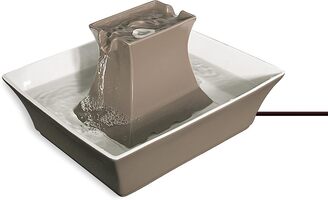 3. PetSafe Drinkwell Pagoda Pet Fountain The PetSafe Drinkwell Pagoda Pet Fountain is a stylish fountain that features a ceramic construction. The fountain's dual streams of water flow into a central basin, providing two drinking areas for your cat. The ceramic construction is easy to clean and is also dishwasher safe. The fountain includes a replaceable carbon filter that helps keep the water fresh and clean.  4. Pioneer Pet Raindrop Stainless Steel Pet Drinking Fountain The Pioneer Pet Raindrop Stainless Steel Pet Drinking Fountain is a sleek and modern fountain that features a unique design. The fountain's raindrop shape and stainless steel construction make it a stylish addition to any home. The fountain's continuous circulation helps keep the water fresh and clean, and the replaceable charcoal filter helps remove impurities from the water. 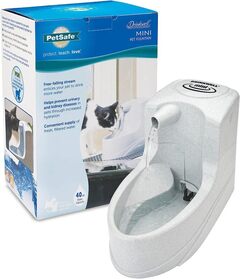 PetSafe Drinkwell Mini Pet Fountain The PetSafe Drinkwell Mini Pet Fountain is a great choice for small cats or kittens. The fountain features a compact design that is perfect for small spaces. The fountain includes a replaceable carbon filter that helps keep the water fresh and clean. The fountain also has adjustable flow control, so you can customize the water flow to your cat's liking. Cats require a steady supply of clean and fresh water for their well-being, which is why cat drinking fountains can be a great option. They entice cats to drink more water and provide continuous circulation that helps maintain water freshness and cleanliness. Amazon offers a wide selection of cat drinking fountains, so you can find the perfect one and have it easily delivered right to your door for your furry friend. Be sure to look for features such as adjustable flow control, replaceable carbon filters, and high quality durable materials like stainless steel or ceramic.  Looking for a fun way to spend some quality time with your furry feline friend? Why not take them outside and enjoy the great outdoors together? Here are six exciting outdoor activities to enjoy with your cat that are sure to make your time together extra special.  1. Take your cat for a walk on a leash. Believe it or not, many cats can be trained to walk on a leash just like a dog! Not only is it a great way to get your cat some exercise, but it's also an opportunity for you both to bond and explore new sights and smells together. Some good leash brands for cats are the PetSafe Come With Me Kitty Harness.  2. Set up an outdoor playpen. If you're looking for a safe and secure way to let your cat enjoy the great outdoors, consider setting up an outdoor playpen. You can find a variety of playpens that are designed specifically for cats, such as the PawHut Large Outdoor Cat Enclosure. This is a great way to give your cat some fresh air and exercise while still keeping them safe and contained. 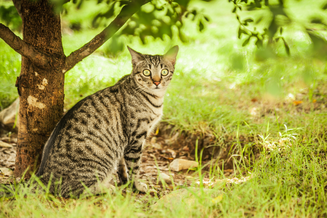 3. Let your cat explore a cat-friendly garden. Cats love to explore new environments and a cat-friendly garden can be the perfect place for them to do so. You can create a safe and stimulating environment for your cat by planting catnip, grasses, and other plants that are safe for cats to eat and play with.  You can also create an indoor cat-friendly environment for your cat with indoor cat grasses, such as the ones you can grow with the the Catit Senses 2.0 Grass Planter. 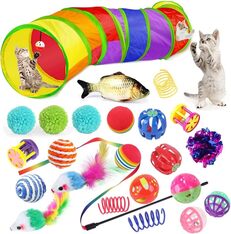 4. Play games with your cat. Bringing toys outside and playing games like fetch or hide-and-seek with your cat can be a great way to bond and have fun together. Some good outdoor toys for cats include lightweight tunnels, balls, crinkle toys, springs, and most other toys that you can also use inside. Just bring them outside into a new environment!  5. Go on a hike with your cat. If you have an adventurous cat who loves to explore, you can take them on a hiking adventure. However, before you go, make sure you have a proper carrier or backpack to keep your cat safe and comfortable. An excellent option is the PetAmi Deluxe Pet Carrier Backpack for Cats.  6. Create an outdoor obstacle course. You can create an exciting outdoor obstacle course for your cat using items like cardboard boxes, tunnels, and other objects. It's a great way to challenge your cat's agility and intelligence, and it's a lot of fun to watch them navigate the obstacles. Some recommended items to purchase as the Hide N Slide Polyester Play Tunnel from Wayfair. You can swap out the balls for cat toys such as crinkle balls, springs, and some of your cat's other favourite toys. No matter what outdoor activity you choose to do with your cat, always make sure to prioritize their safety and comfort. And don't forget to have fun and make some unforgettable memories together!
Dear Diary,
Another day, another opportunity to wreak havoc in my human's lives. Today, I started off the morning by knocking over their potted plant. I mean, who needs oxygen anyway? It's not like they're going to die or anything. I just wanted to let them know who's in charge around here. After breakfast, I decided to take a little nap on the couch. But, of course, I couldn't just sleep peacefully like a normal cat. No, I had to start kicking my legs and meowing loudly, just to make sure my humans knew I was there. They always appreciate my wake-up calls. In the afternoon, I got bored and decided to start climbing the curtains. My humans get so upset when I do that, but it's just too much fun. I mean, who doesn't like to feel like they're on top of the world? Plus, it's a great way to sharpen my claws. Later on, I found a piece of string lying around, and I just couldn't resist. I started batting it around, jumping up and down, and generally acting like a crazy cat. My humans just looked at me like I was insane, but hey, at least I'm having fun. As the day came to a close, I decided to settle down and get some snuggles from my humans. They always fall for my cute face and soft fur. I mean, who wouldn't want to cuddle with a Bengal cat like me? All in all, it's been a pretty typical day for me. Just doing my part to keep my humans on their toes and remind them who's really in charge around here. Life is good when you're a mischievous Bengal cat. Until next time, Your favourite troublemaker |
AuthorCarmen Klassen, Owner of Jewelspride Bengals Archives
June 2023
Categories
All
|
Copyright © 2024 Jewelspride Cattery and Carmen Klassen
- Welcome to Jewelspride Bengals
- SHOP
- Jewelspride Designs
- Life is Better With Bengals - Blog Articles
-
KITTENS
- Links
- SHOP
- Bengal Care - Everything You Need to Know
- About Us
- Catios and Cat Posts!
- Cat Boarding!
- ** Queens **
- ** Studs **
- Our Cattery and Visits
- Cat Wheels
- **NEW** Jewelspride Alumni
- Photo Gallery & Videos
- Uno's World
- Contact Us
- *New! Cat TV!*
- New Page
- Custom Gifts by Carmen

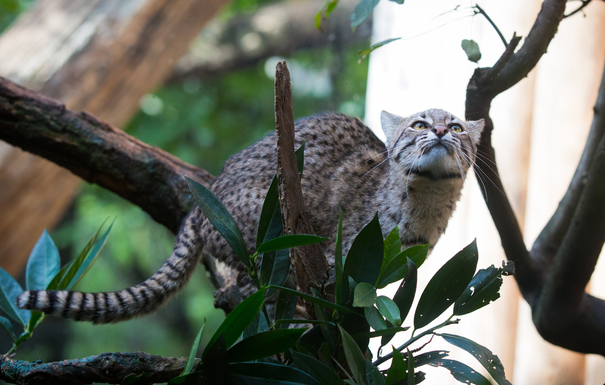

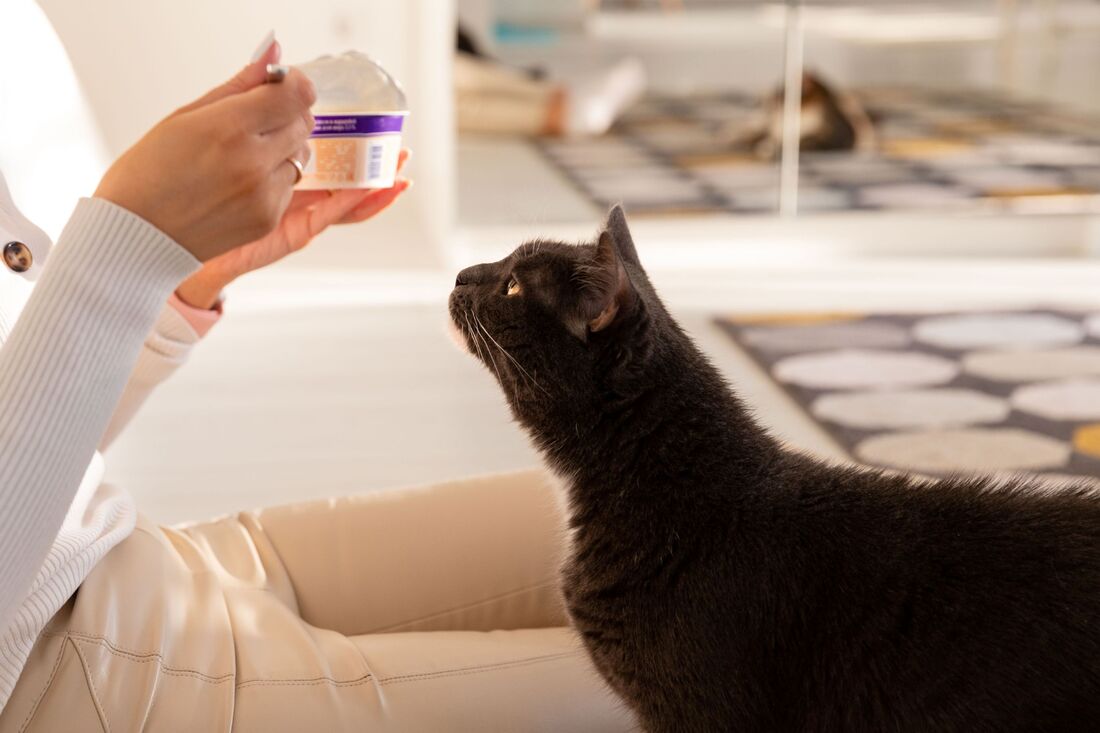


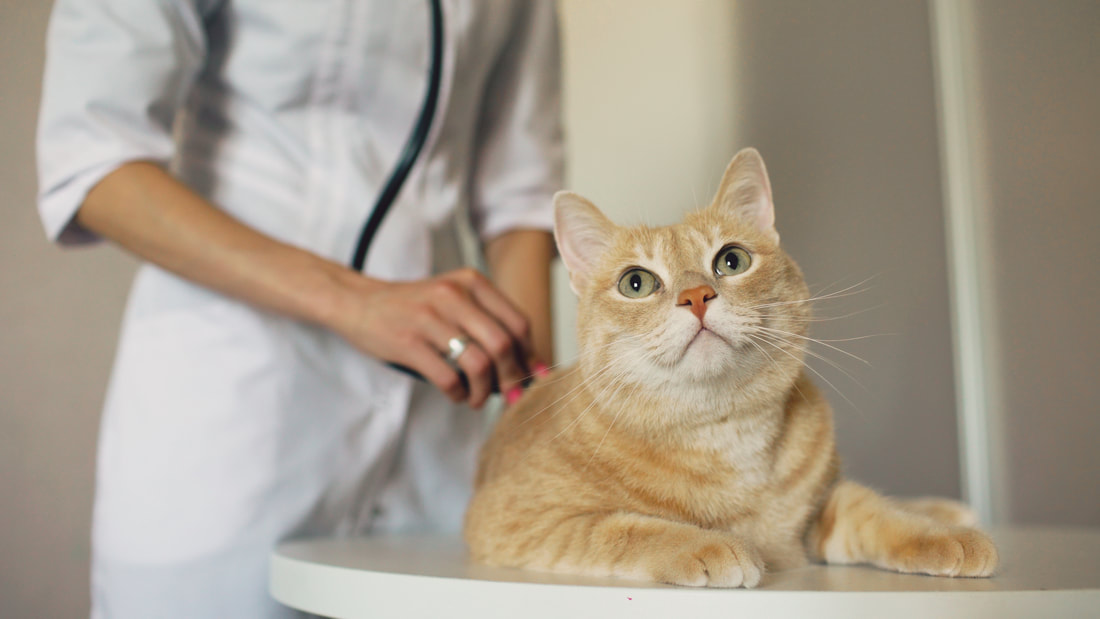
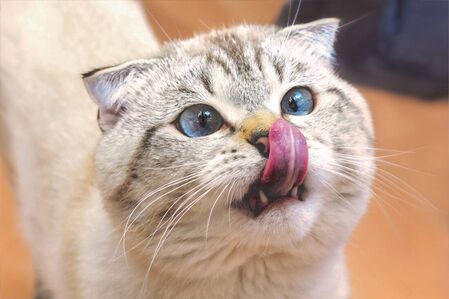
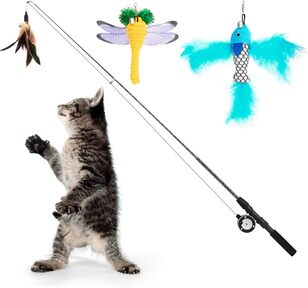
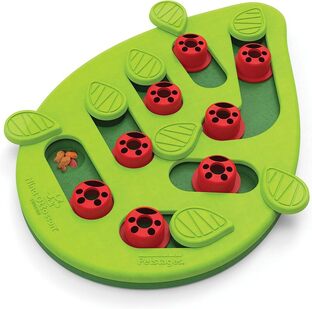

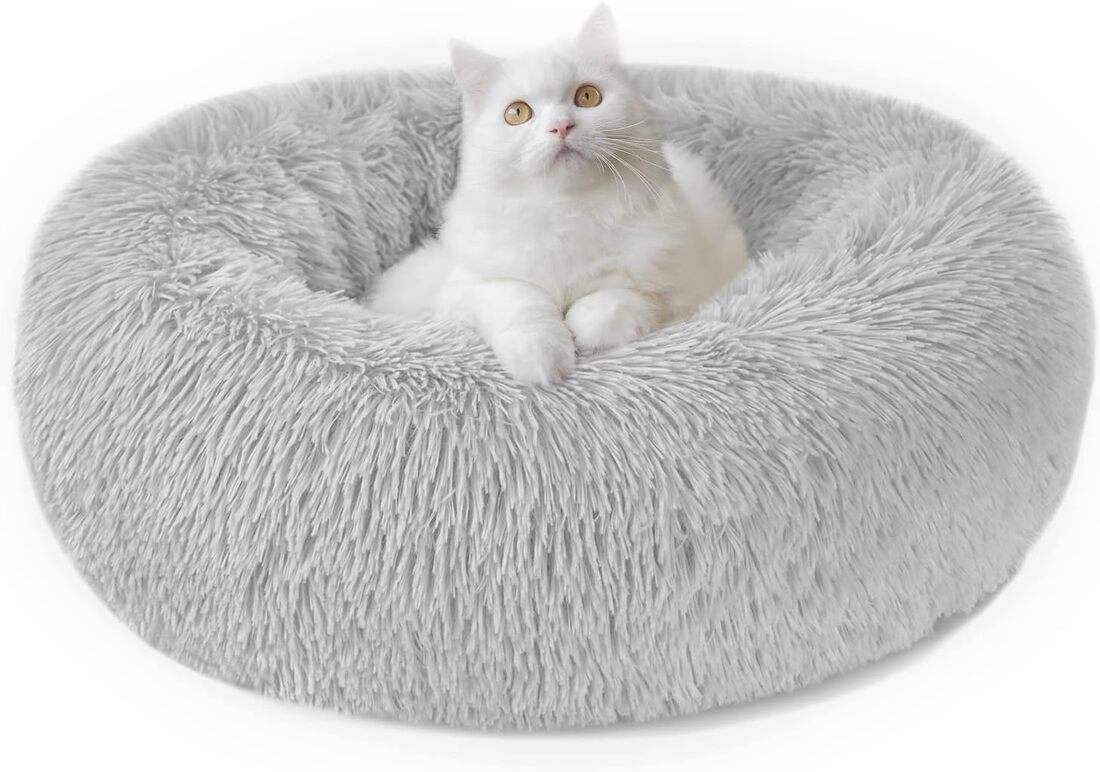
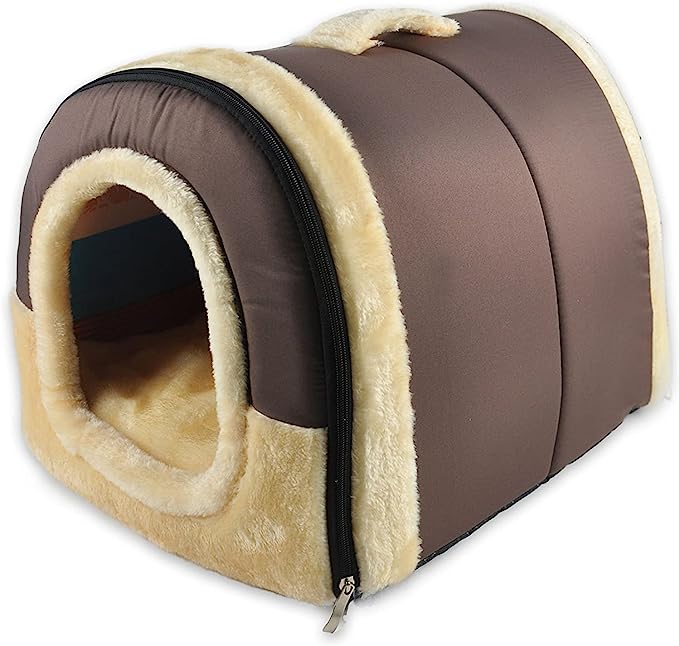
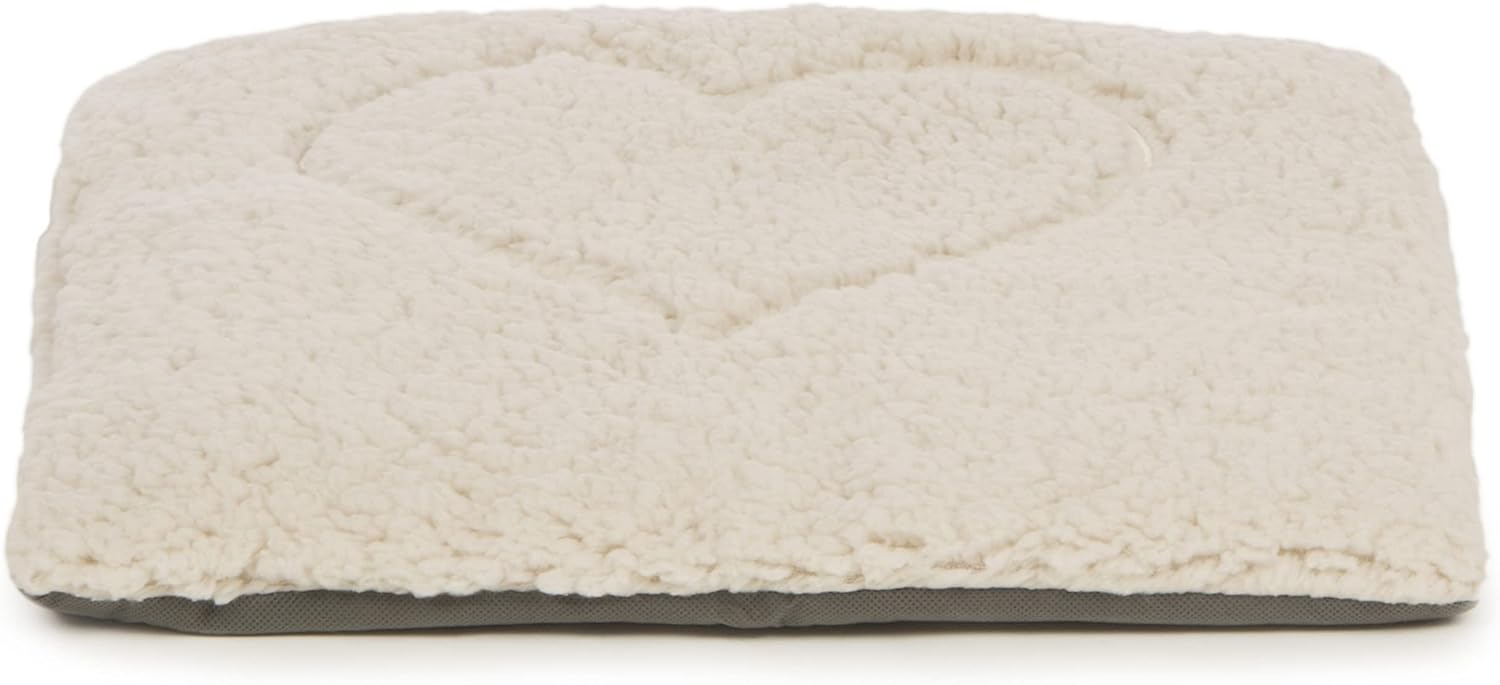
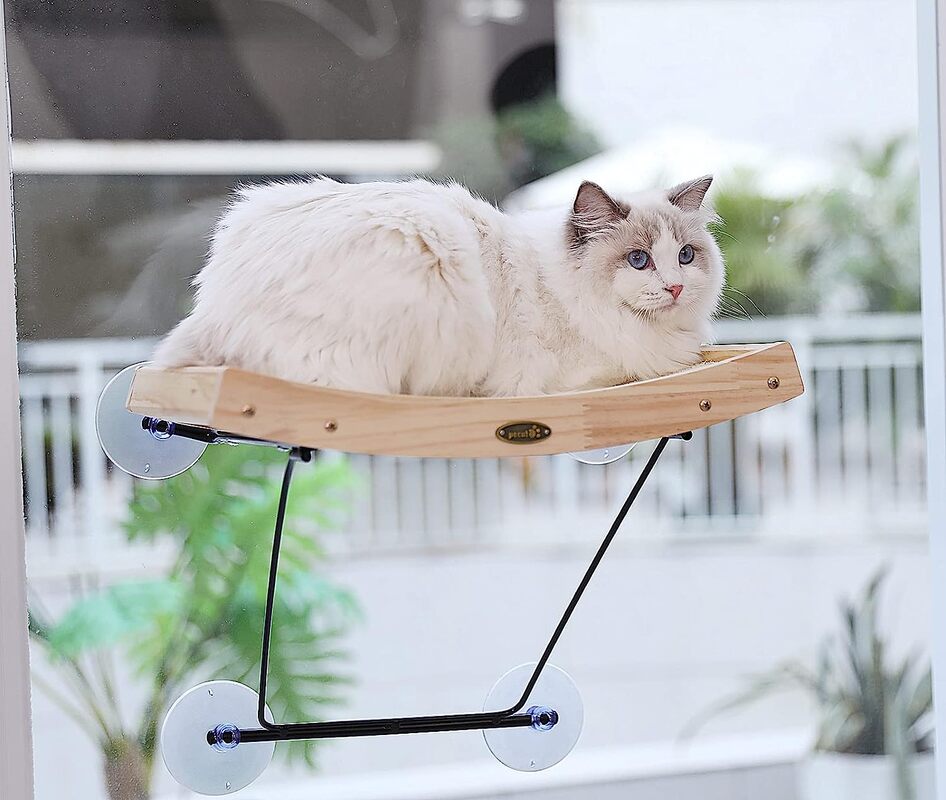
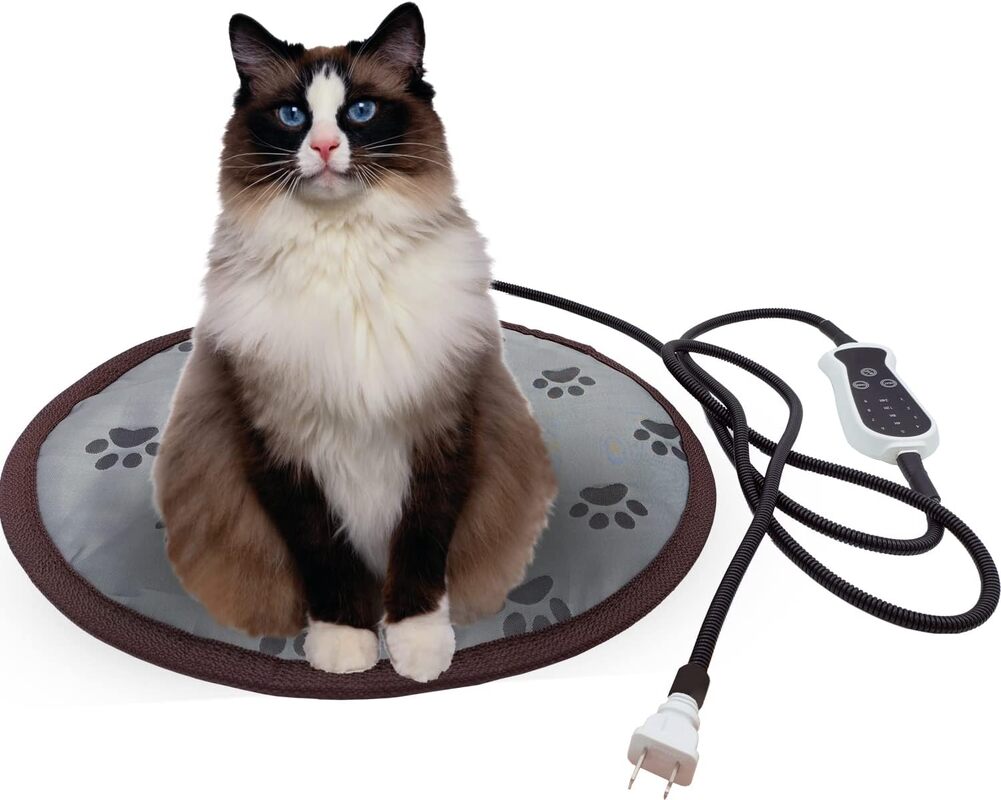
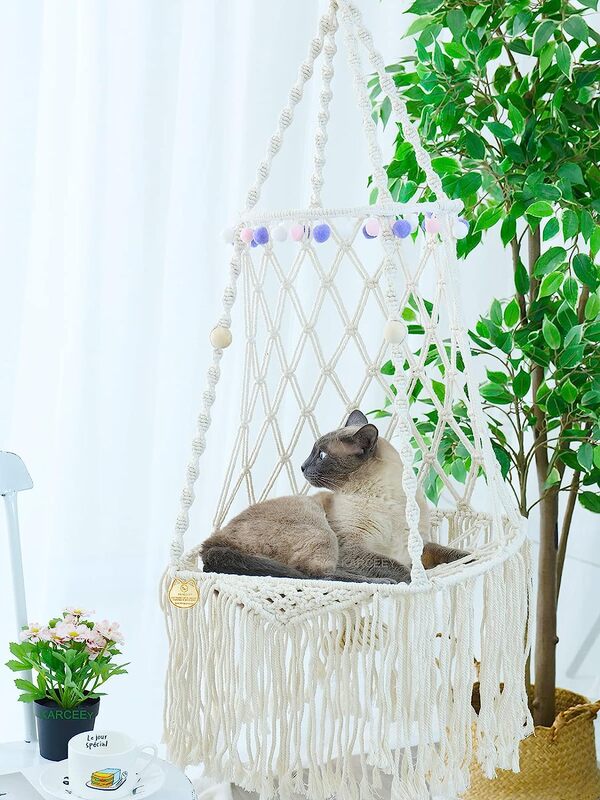
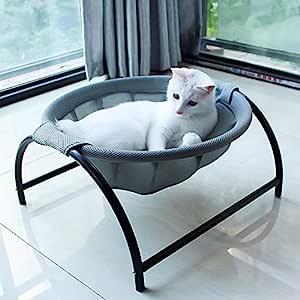
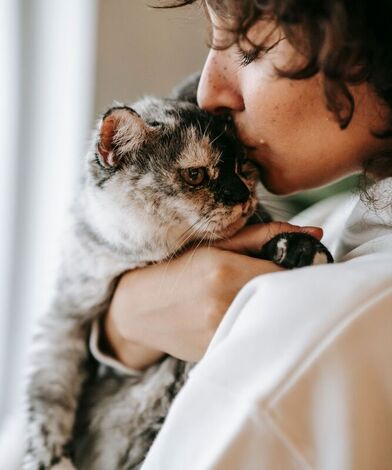
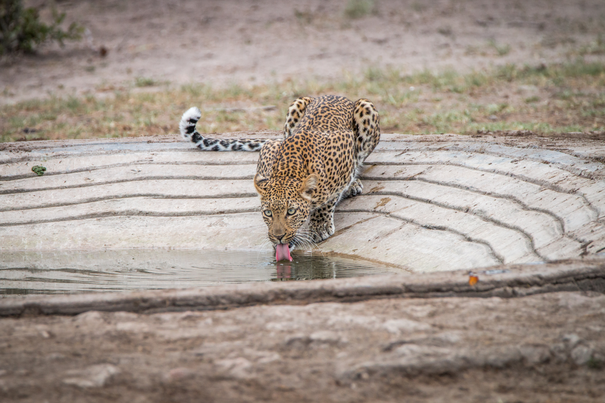
 RSS Feed
RSS Feed




